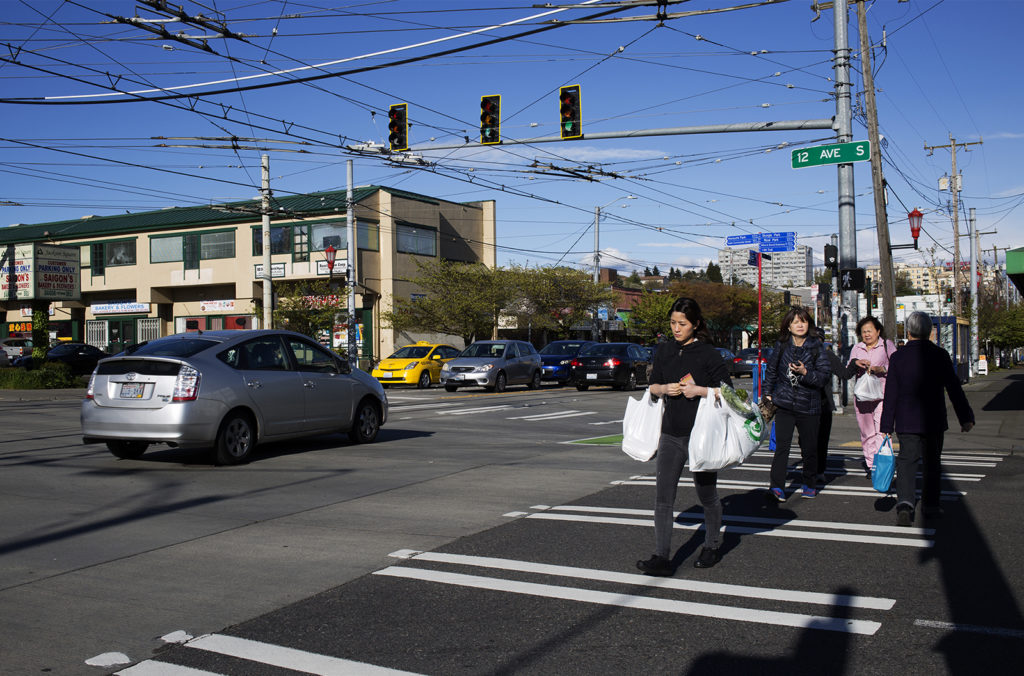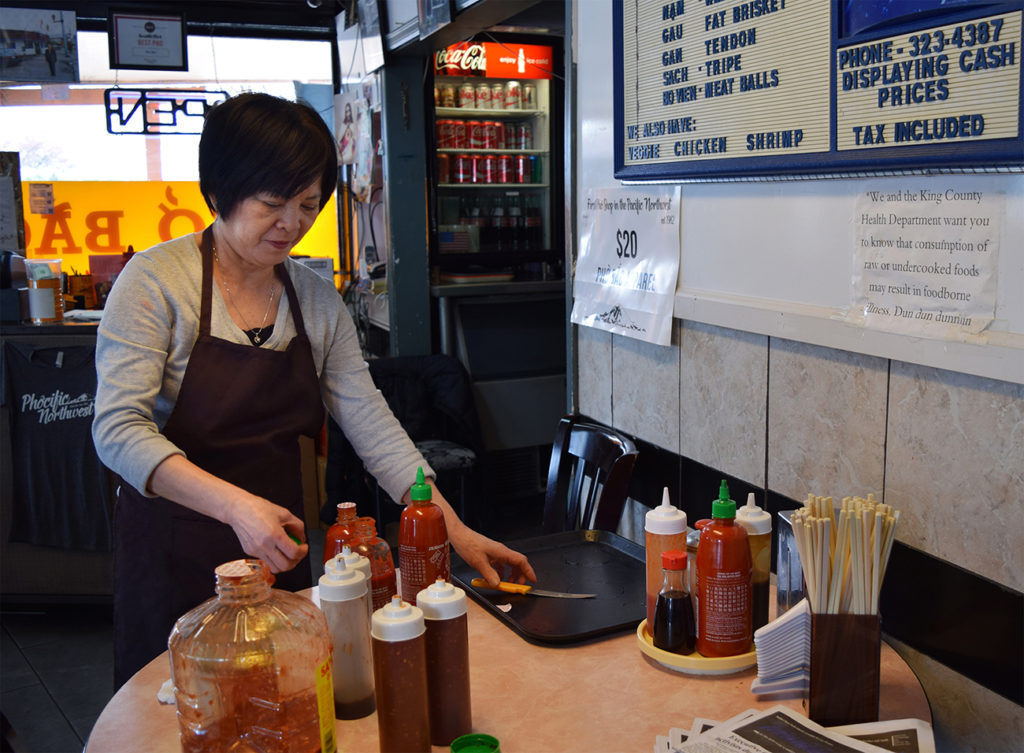
Tam Nguyen believes many Vietnamese are wary of airing grievances publicly because of their experiences in Vietnam, where you “don’t have any kind of influence and if you raise your voice, you may not live the next day in Vietnam.”
But a threat to business owners’ livelihoods in Seattle’s Little Saigon neighborhood spurred a shift, with Nguyen at the forefront.
“So,” Nguyen said, “we learned.” Learned to knock on doors, gather petitions and get involved in city government — things Nguyen and his neighbors had generally avoided for decades.
Much like the rest of Seattle, the Little Saigon district is undergoing changes.
That’s clear from the vantage point of Tamarind Tree restaurant. Nguyen, the owner of the popular Vietnamese eatery, points up to the hill.
“You see the light poles? Right there? That’s Yesler Terrace.”
Yesler Terrace was a thirty-acre public housing site that’s being redeveloped by the Seattle Housing Authority into a mixed-income community of housing and businesses. Nguyen’s restaurant is tucked in the back corner of Little Saigon’s Asian Plaza, abutting the hill leading up to Yesler Terrace. The restaurant is well-known in Seattle, but Nguyen isn’t so sure he’ll be able to afford to stay there.
The owners of Asian Plaza are planning to redevelop the aging strip mall — something Nguyen saw on the horizon when he heard about the Yesler Terrace redevelopment plans. He knew that more development in the district could make maintaining businesses, including his own restaurant, unaffordable.
Little Saigon became a hub for the Vietnamese in the 1980s and ’90s. At the end of the Vietnam War in 1975, the US admitted 125,000 people. Now the Seattle area is home to some 46,000 people who were born in Vietnam. They opened restaurants, jewelry and grocery stores that pepper the once industrial corner of town that makes up Little Saigon. Nguyen hasn’t seen the kind of development that’s happening in the district today since his arrival in the US as a teen in 1980.
Today, the four blocks that make up the district are relatively untouched compared to the rest of the city. Most of the small businesses top out around 30 feet — a drastic difference from the high rises just off in the distance.
“This is the last district still very central, but extremely affordable for developers,” Nguyen said.
When the city proposed the redevelopment of Yesler Terrace, Nguyen and a friend drafted a petition expressing concern about what it could mean for the rest of the district. The restaurateur says he brought a stack of signatures to the city council, but was unsuccessful in influencing the city’s decision regarding the building complex’s height, which was Nguyen’s concern. But this was one of the first advocacy efforts to help establish communication with the city.

The grassroots organization Friends of Little Saigon started in 2011 to help promote and preserve the district. Nguyen sits on the board of the organization that serves as a liaison between Little Saigon and the city, making sure their interests are represented. Until then, the Vietnamese community in Seattle had largely avoided involvement in social and political matters with the city, Nguyen said.
“I just got straight to what hurt the most for a business owner, because I’m a business owner, so I know exactly what they’re thinking about,” he said.

Yenvy Pham, the 29-year-old co-owner of Pho Bac, another restaurant in Little Saigon, is the creative director of Friends of Little Saigon. She believes change is inevitable. But Pham wants developers to know that the district is paying attention.
“What are we going to do keep the culture [and] identity alive? How can we bring more people to the table? How can we make economic development more well rounded?” she said.
Nguyen worries about the erasure of the history from those he calls “outsiders.” He fears developers will have no concern for how Little Saigon came to be.
“There’s no concern for the mom and pop shops, no concern for the identity, preservation for the Vietnamese community,” Nguyen said.
As refugees from Vietnam, he said, those four blocks are a physical representation of a place the Vietnamese already left behind. He doesn’t want to leave his home again.